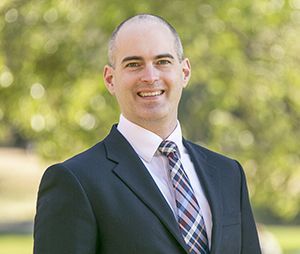How Forecasting Water Reclamation Use Can Save Money, Water Resources

A changing climate and recent droughts in the South and West highlight the need to make the most of our limited water resources.
One of the tools that can help the U.S. make efficient use of its water supplies is water reclamation — but utilities and water managers have sometimes struggled to deal with public perceptions of reclaimed water. And that has made it difficult to plan water reclamation projects.
Now, an interdisciplinary team of NC State researchers including communication professor Andrew Binder has developed techniques to help utilities make informed planning decisions.
“We knew from earlier research that there can be public resistance to adopting water reclamation, which has ramifications for infrastructure planning,” says Binder, an associate professor of communication and co-principal investigator of the National Science Foundation-funded study. “So we used social science techniques to determine what causes this resistance, how people communicate with each other about it, and what that likely means for actual use of reclaimed water — all of which is valuable for planning and policy development.”
Water reclamation takes treated wastewater and uses it primarily to meet non-drinking water demands, such as for watering lawns or golf courses. However, despite the fact that reclaimed water has been treated and is safe, there can still be a perceived “yuck factor.” And some people may have trouble accepting the idea that reclaimed water is safe.
“We wanted to better understand the public’s willingness to use reclaimed water and develop a model that policymakers and water utilities can use to inform their decisions about water reclamation,” says Emily Zechman Berglund, a civil and environmental engineering researcher at NC State who is the principal investigator on the study. “Our goal was to develop a model that could help them develop more efficient and cost-effective water reclamation projects.”
The researchers’ first step was to conduct the largest nationally representative survey on water reclamation in the United States, asking 2,800 adults about their perceived risks and benefits associated with reclaimed water.
They found that survey respondents fell into one of four groups: 25.2 percent of respondents were in the “optimistic” group, which thought water reclamation was highly beneficial and low risk; 11.8 percent were “alarmed,” and thought water reclamation was high risk and not beneficial; 23.4 percent were “conflicted,” and felt there were significant benefits and risks; and 39.6 percent were “neutral,” and had no strong feelings about water reclamation.
The survey also collected information on how often respondents talked about political issues with other people who had similar political views as well as with people who had different political views. This was viewed as a proxy for how people would communicate with others about water reclamation.
The researchers then used these survey results to develop an “agent-based” computer model that could simulate how public opinion would shift over time. Berglund and Binder then plugged the survey’s risk-benefit numbers into the model and ran it, to see how public opinion within a community might evolve in regard to acceptance of water reclamation.
“We found that, based on the national survey data, water reclamation will gain widespread acceptance,” Berglund says. “But the risk-benefit data varies widely from region to region, and those differences play a big role in determining how long it takes for different regions to accept reclamation.”
For example, in the drought-prone mountain region reaching from Idaho to Arizona, 38.8 percent of respondents were in the optimistic group about reclamation, with only 8.7 percent being in the alarmed group. But in the southeast central region encompassing Kentucky, Tennessee, Alabama and Mississipi, only 21.9 percent were optimistic and 17.2 percent were alarmed.
“Our model predicts that residents in the mountain states would reach 90 percent support for water reclamation less than 10 years after a water reclamation system is introduced,” Binder says. “Whereas residents in the southeast central region would take about 15 years to reach 80 percent support.
“And the dynamics are interesting,” Binder says. “The model suggests that the optimistic group pulls in people from the conflicted and neutral groups, while the number of citizens in the alarmed group remains relatively unchanged.”
“It’s also important to note that there can be a lot of variability between communities in a region,” Berglund says. “So it would make sense for utilities to survey their specific customers and plug that data into our model to gauge how quickly water reclamation might gain acceptance.”
The rate at which customers accept the use of reclaimed water is important, because water reclamation projects are usually implemented in stages, with each new stage adding capacity to the system. And utilities want to plan system growth to match the amount of reclaimed water people will actually use.
“You don’t want to pay to build a huge project all at once, if people won’t be using the full capacity for 10 years,” Berglund says.
There are implications for infrastructure maintenance as well. For example, if a large-scale reclamation project is built, and a significant percentage of the water remains unused due to public opposition, the amount of unused water could place increased pressure on pipes and other infrastructure — increasing wear and tear while also preventing the system from functioning efficiently and causing water quality problems.
“Water reclamation can play an important role in sustainable water use, and we’re optimistic that this work can help utilities incorporate water reclamation projects as effectively as possible,” Berglund says.
- Categories:


